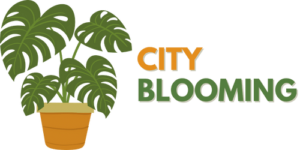More About City Blooming
Intrigued in expanding food for sale in the City of Chicago? Below is a listing of regularly asked concerns pertaining to the policies and policies that cultivators ought to consider when planning a metropolitan farming task.
The zoning change does not change any various other codes handling composting, building licenses, buying or leasing City had residential or commercial property, company licenses or environmental contamination. There are existing codes that control these concerns and they remain completely impact and may be relevant to your job. Community gardens are generally had or taken care of by public entities, civic organizations or community-based companies and preserved by volunteers.
Urban farms grow food that is meant to be marketed, either on a not-for-profit or for-profit basis. Due to their commercial objective, metropolitan ranches need a service permit.
The Of City Blooming
The quantity of compost product can not exceed 25 cubic yards at any offered time according to the requirements in 7-28-715 of the City's Municipal Code. Since the soil at a lot of brand-new garden sites requires changing, compost, soil, wood chips, or various other materials can be obtained to construct or boost the growing room.

If a building license is required after that the hoophouse will be thought about an accessory building. You can figure out more regarding the building license demands by speaking to the Division of Buildings. The 25,000-square-foot dimension limitation is meant to stop a solitary area yard from controling an offered block or taking away from the block's existing residential or business character.
The restriction does not apply to yards located in Public Open Area (POS) areas. Can there be more than one community yard that is 25,000 square feet on a single block? Yes. The size limitation uses to private yards, not to individual blocks. No. Secure fencing is not required, nevertheless, yards that have big car park areas might be required to mount fence or other landscaping features.
The smart Trick of City Blooming That Nobody is Talking About
B1 & B2 areas need that all industrial use tasks be carried out inside your home. Is fencing required for city farms? Fences may be required, along with landscaping and testing, for particular car park locations and exterior job or storage space locations depending on place and the particular task taking location.
Urban ranches need building authorizations and zoning approvals prior to building (eco-friendly practices). Various other types of city review might be called for depending on specific frameworks, tasks, dimension, landscape design, licensing, public heath and stormwater management problems.
Yes. The kind of certificate is identified by what is happening at the site. The Division of Company Matters and Consumer Defense can assist determine the specific kind of company permit that's required. Yes. Off street vehicle parking is needed for a lot of industrial projects in Chicago. The needed variety of parking spaces is based on the number of staff members servicing site and not the square video footage of the expanding room.
The Main Principles Of City Blooming

A city ranch can offer garden compost product created on website, nevertheless, the procedure needs to conform with the guidelines in 7-28-715 of the Chicago Municipal Code. Aquaponic systems are enabled inside on city ranches in several zoning areas.
Approximately 5 hives or colonies of honey bees might be maintained as an accessory usage. However, beekeepers need to sign up with the Illinois Division of Agriculture. To find out more about the proposed zoning amendment you might speak to the Division of Housing and Economic Development, Bureau of Preparation and Zoning at 312.744.8563.
Farming in cities and metropolitan areas An urban ranch in Chicago. Urban agriculture describes numerous practices of growing. https://anotepad.com/note/read/ewb5qah3, handling, and dispersing food in city locations. The term likewise relates to the area activities of pet husbandry, tank farming, beekeeping, and horticulture in an urban context. Urban farming is identified from peri-urban agriculture, which happens in backwoods at the edge of suburban areas.
The Facts About City Blooming Uncovered
It can entail an activity of organic growers, "foodies" and "locavores", that seek to create social media networks based on a common ethos of nature and community holism. These networks can create by way of official institutional support, coming to be incorporated into local town as a "change community" activity for lasting urban development.
The a lot more direct access to fresh vegetable, fruit, and meat items that may be realised through urban agriculture can improve food safety and security and food safety and security while lowering food miles, bring about lower greenhouse gas emissions, therefore adding to climate change reduction. Several of the very first evidence of metropolitan farming comes from Mesopotamia.
Comments on “A Biased View of City Blooming”